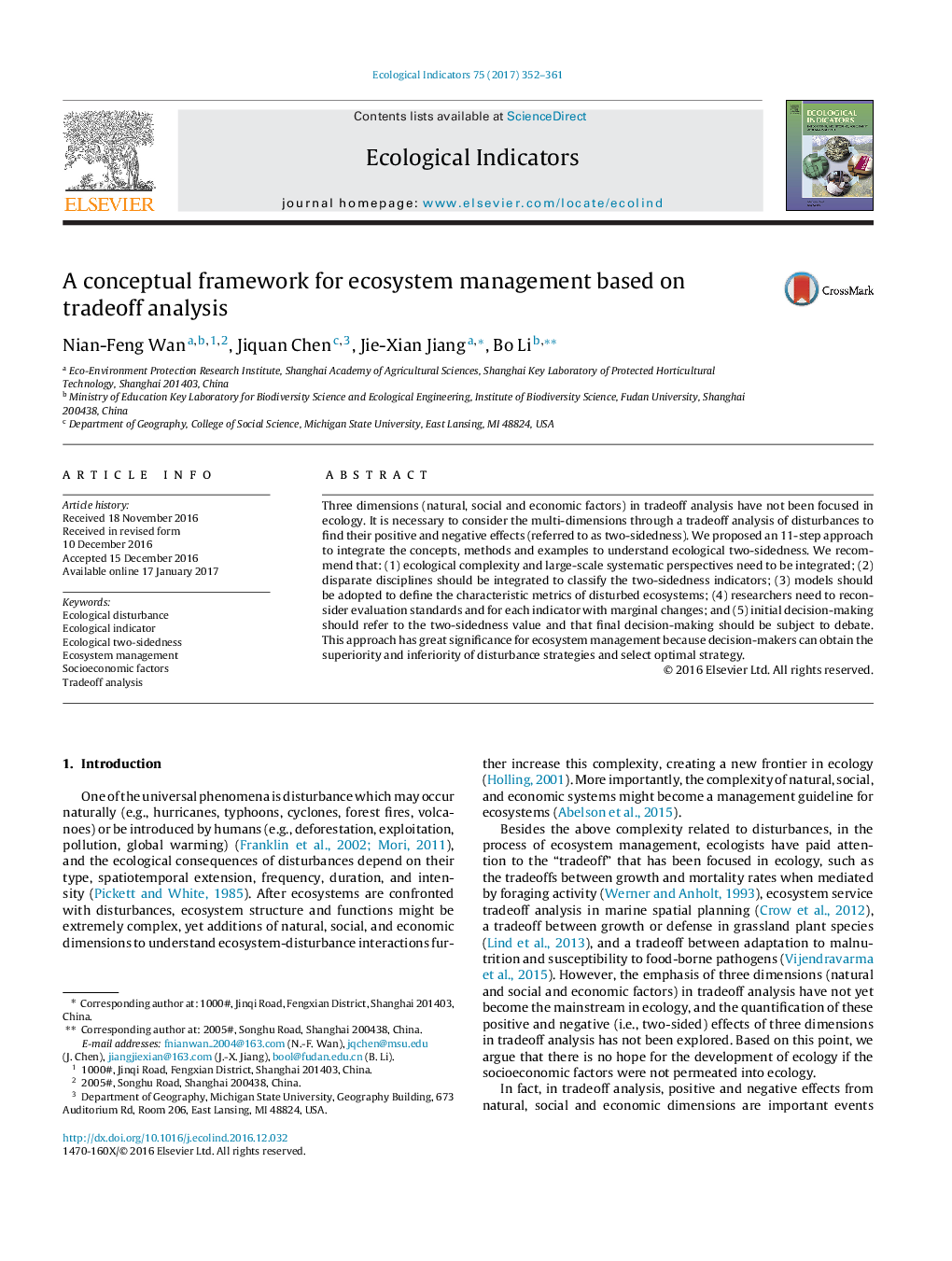| Article ID | Journal | Published Year | Pages | File Type |
|---|---|---|---|---|
| 5741826 | Ecological Indicators | 2017 | 10 Pages |
â¢We present an indicator of ecological two-sidedness based on tradeoff analysis.â¢We establish a conceptual framework for ecosystem management.â¢The lower the two-sidedness value is, the better the ecosystem management is.â¢Decision-makers can utilize this methodology to manage ecosystems.
Three dimensions (natural, social and economic factors) in tradeoff analysis have not been focused in ecology. It is necessary to consider the multi-dimensions through a tradeoff analysis of disturbances to find their positive and negative effects (referred to as two-sidedness). We proposed an 11-step approach to integrate the concepts, methods and examples to understand ecological two-sidedness. We recommend that: (1) ecological complexity and large-scale systematic perspectives need to be integrated; (2) disparate disciplines should be integrated to classify the two-sidedness indicators; (3) models should be adopted to define the characteristic metrics of disturbed ecosystems; (4) researchers need to reconsider evaluation standards and for each indicator with marginal changes; and (5) initial decision-making should refer to the two-sidedness value and that final decision-making should be subject to debate. This approach has great significance for ecosystem management because decision-makers can obtain the superiority and inferiority of disturbance strategies and select optimal strategy.
